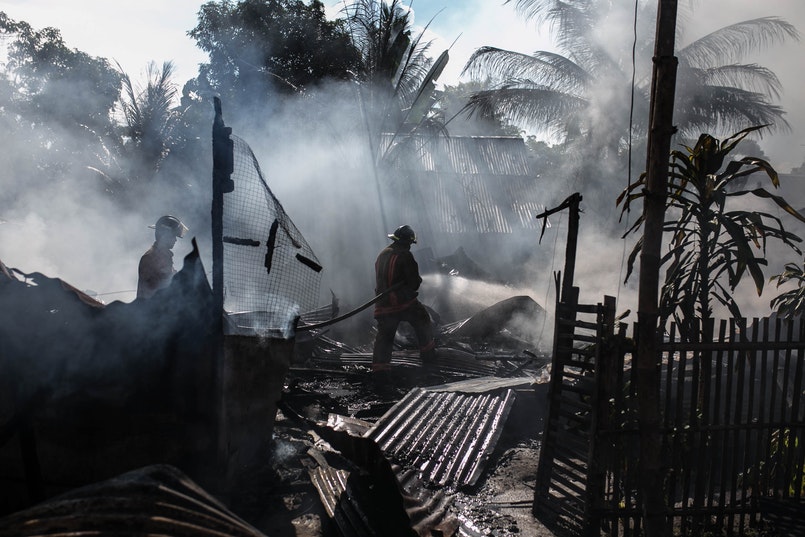Developing a Business Continuity Plan: A Comprehensive Guide
31 Jan 2023
26 Mar 2021
min read

As a business owner, you are probably busy developing growth strategies to expand your business. It is important, however, that you also think about preparing for business continuity planning that will be needed when encountering unforeseen events, as insurance may not cover all costs incurred or mitigate negative effects flowing from devastating events. You will need business continuity planning to be adequately prepared. A business continuity plan is a document that outlines the information and procedures you will need to follow if disaster strikes to get your business running again. We will be showing you how to create one that will allow your business to respond to any adverse events effectively. We also have a sample business continuity plan for you to use here.

What is a Business continuity plan?
A business continuity plan is a document that gives guidance on procedures regarding how a business should continue to operate after an unforeseen or adverse event. It is more comprehensive than other documents like disaster recovery plans. A good business continuity plan should cover every aspect of the business which might foreseeably be affected, such as human resources, marketing, assets, clients, business partners, etc. A business continuity plan might be useful in the following scenarios, among others:
-
Natural disasters
-
Cyberattacks (Incidental privacy breaches, data leaked, corrupted computer systems, security breaches)
-
Loss of personnel (Due to sicknesses, accidents, termination of contract)
-
Human errors
-
System failures (e.g., power outage)
-
Deliberate attack (e.g., theft)
What are the key components of a business continuity plan?
Business Impact Analysis
This is the most important component of any business continuity plan. You should first identify different business activities and the relevant resources required for those activities. This information can be used to quantify the magnitude or importance of certain components and determine the potential impact of a disaster on different aspects of the business (e.g., which processes, team or functions does it affect). This is useful for formulating strategies. A daily, weekly, and monthly workflow and financial report will allow the managers of your businesses to quickly identify the problems that are affecting your businesses. Some key indicators might include:
-
Cash flow
-
Profits/loss margins
-
Expenditures
-
Customers
-
Expenditures per customer
Recovery
This concerns the steps that the business should take to recover its core business functions after the disruptive incident occurs.
Organisation
This centres around the specific people that will be responsible for diagnosing the problem, as well as formulating and executing recovery plans. A continuity team comprised of these people will form.
Training
The continuity team must be trained. This could be done through workshops, where your employees are placed under a simulation. This process allows you to assess the effectiveness of the recovery plan that you have devised for your business. It also ensures that the staff is equipped with the relevant skills and knowledge needed to execute the recovery plans so that the procedures can be executed more efficiently.

Why is a business continuity plan important?
The costs of recovery can be very expensive
More than 60% of new businesses fail in the first year – many of these failures being a result of the lack of strategy, resulting in them failing to bounce back after a crisis. Even if a business is growing steadily, if it does not have the resources to resolve problems and recover its essential functions when disaster hits, the success will be short-lived. The costs of replacing damaged equipment and buildings can be enormous.
Time is of the essence
Not all businesses have monopoly power where they dominate the market, and disruptions to their services are not detrimental to their client base. For businesses that do operate in a competitive market, even the smallest disruption could enrich their competitors, resulting in the business losing the confidence of their customers.
Protecting your assets
Businesses often use their investment funds to procure assets for long-term use. A disaster may jeopardise your plans of making the most of the assets that you have invested.
Community Impact
The failure of a business does not only affect the business owner. This is especially true if your business provides an essential service or forms an integral part of people’s daily lives. A business continuity plan also benefits the community of people who depend on the business's functioning.

What are the most common disasters/events?
IT Disasters
A prime example would be IT disasters, where, for example, a computer system becomes corrupt. IT-based business disruptions can be caused by employee errors, hardware failures, or software issues. IT-based disasters are common as almost everything we do in our day-to-day depends on technology. More now than ever, as you might have noticed that during the pandemic, many businesses have shifted their business online. It has never been more important for businesses to have the capacity to quickly recover from platform failures.
Specifically, data collection is immensely important to businesses, and losing access to it could be detrimental – particular for those businesses where ‘digital’ or ‘soft’ assets are their only assets.
Natural Disasters
This includes physical disruptions such as floods, earthquakes, lightning, and hurricanes. This type of disaster will typically affect businesses with tangible assets that can be damaged or destroyed during a natural disaster, causing losses and disruptions to service. The safety of employees is also important. Without a proper plan, employees may not know how to act in a way that guarantees their safety and minimises losses for the company.
Some geographical locations are more susceptible to certain natural disasters. The business continuity plan should take this into account and should also ensure that adequate emergency and safety equipment is provided to safeguard the wellbeing of all staff members, clients, and the community.
Human Errors
Human errors are inevitable and very common. As such, a company needs to train its employees to always report their mistakes. Businesses should also employ software to reduce human efforts in identifying mistakes. This will allow businesses to be notified quickly, which may help prevent the mistake from being made in the first place.
Deliberate attack
This may include mugging, trespassing, stealing, terrorist attack, or crimes. Sometimes these situations arise without an apparent reason, making them hard to predict. Nevertheless, as a business owner, it is your responsibility to place the wellbeing and safety of your employees above all, as employees are assets to the company.
Additional practical tips on how to deal with disasters
1. Devise a business recovery plan. This plan should include a step-by-step process for identifying the problem, how execution is to be overseen, and how employees should be trained to implement the recovery plan.
2. Identify key assets that need to be protected.
3. Devise a key communication flow chart/phone tree to ensure easy communication between parties.
4. Make sure that all locations of the business (e.g., offices) are adequately equipped with emergency supplies (especially for fire safety purposes) and that emergency routes and exits are marked.
5. Test the emergency plans periodically and record their effectiveness using certain performance indicators
6. Provide your employees with a template or format for writing a post-recovery report on the recovery process and to assess the consequences which follow.
Business continuity plan template
For a more detailed business continuity plan template, please see our sample template here.
Please note that this is a general summary of the position under common law and does not constitute legal advice. As the laws of each jurisdiction may be different, you may wish to consult your lawyer.
Keywords:

